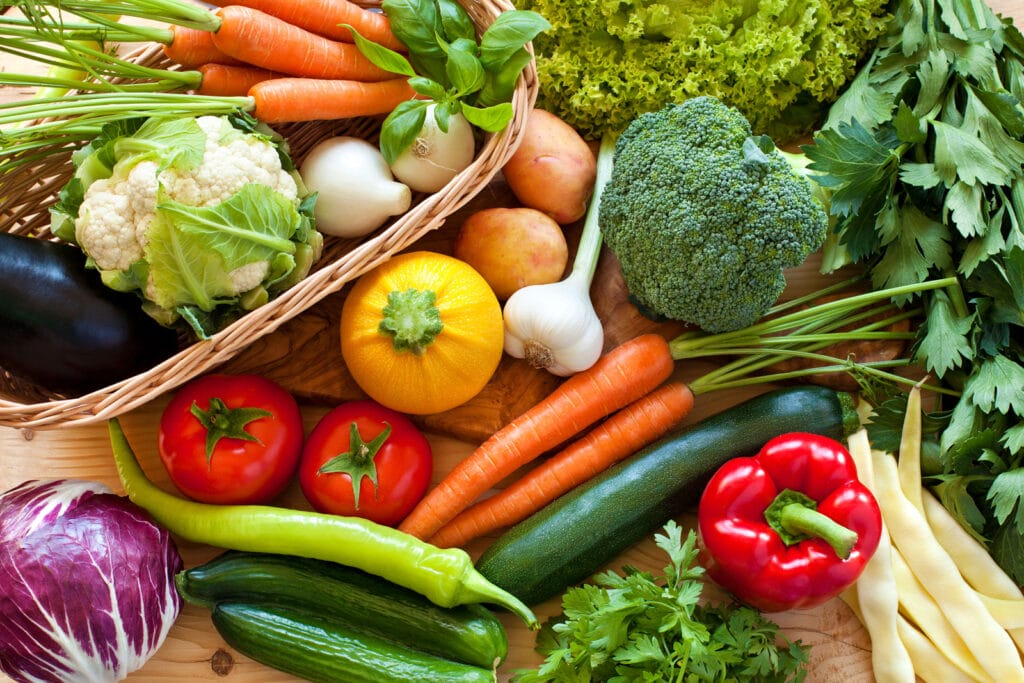We know that eating veg is good – for fuelling our bodies, providing vital vitamins and minerals, feeding our gut bacteria, the list goes on! But could our cooking methods actually be draining them of their precious health benefits?
Currently, the global recommendation for fruit and vegetable consumption is around 400g a day. Or as we tend to know it – 5 portions (a portion working out to around 80g) per day. The average daily intake in the UK sitting at 3.7 portions, there’s certainly room for improvement. But portions aside – is it true that the way we prepare our veg could affect its health benefits too?

Most fruits come ready to eat, whereas vegetables commonly undergo some kind of cooking before they hit your plate.
Studies have shown that longer cooking times typically lead to losses of Vitamin C content and Glucosinolates (impounds linked with having protective effects against cancer). So, generally, cooking as little as possible is the way forward! And – avoid fully submerging in water. Boiling and pressure cooking most vegetables have been found to be the most harmful in the way of nutrient losses.
As always though, there are exceptions; pigments found in yellow, orange and red veg (aka Carotenoids and Lycopene, which have antioxidant effects) tend to be more available when boiled or stewed for a longer period, as cooking softens the cell walls, facilitating easier absorption. So if you’ve bagged yourself a pumpkin, it will serve you well to go low and slow! And tomatoes? Not a vegetable, we know! – but they’re actually a win-win when it comes to cooking methods. Eaten raw, they’re a great source of Vitamin C. Cooked for 30 minutes or more, and studies have shown that their Lycopene levels increase by 35%. So for salads or homemade sauces, you’ve struck gold!
So let’s get practical; with most sunset-coloured and root veg aside, here’s a rough guide for getting the most bang for your buck out of your nutrient-packed veg:
Steaming
Steaming is you best friend – so consider investing a few quid in one of those little metal steamers that sits inside your pan! Make sure the water level doesn’t rise above the steamer tray. Steam until just cooked, but still slightly crunchy! The veg colour is usually a clue too; if your broccoli or beans are still bright green, then it’s looking good. If they’ve lost their lustre then it’s likely they’re been overdone a little. Don’t have access to a hob or steamer? It can be done in the microwave too! Pop your veg in a microwave-proof bowl with a splash of water in the bottom, and pop it in for 1:00! Give it a little shake and move around (to combat any hot-spots) and pop it back in. Time will vary on the type of veg and quantity, so keep a note of what works for you.
Flash Frying or Griddling
Short sharp and fast is the name of the game – we want that crunch! So keep the heat high and the cooking time short. Nobody wants a soggy stir fry!
If Boiling…
If you’ve got to boil – for whatever reason – keep the cooking time short, and consider preserving the nutrient filled water afterwards as a base for homemade soup!
So there we have it – a few small changes to your cooking habits could transform the amount of nutrients you’re getting from the good stuff! As a final thought – did you know that the way you store veg (and for how long) can have an impact on the nutrient content to? Studies have shown that freshly frozen veg stores more nutrients that those which have been sitting in a fridge for 5 days. So, if you’re shopping for the week, adding some frozen veg to your list for the last few days of the week wouldn’t be the worst idea!
Adele Wayt
Keen to hone in on your nutrition? Get in touch with us today to find out about our bespoke Nutrition Coaching options, and how we can help you reach your goals!
Sources: “How Should You Cook Veg” – Laura Tilt, Registered Dietician, WH May 2021.
